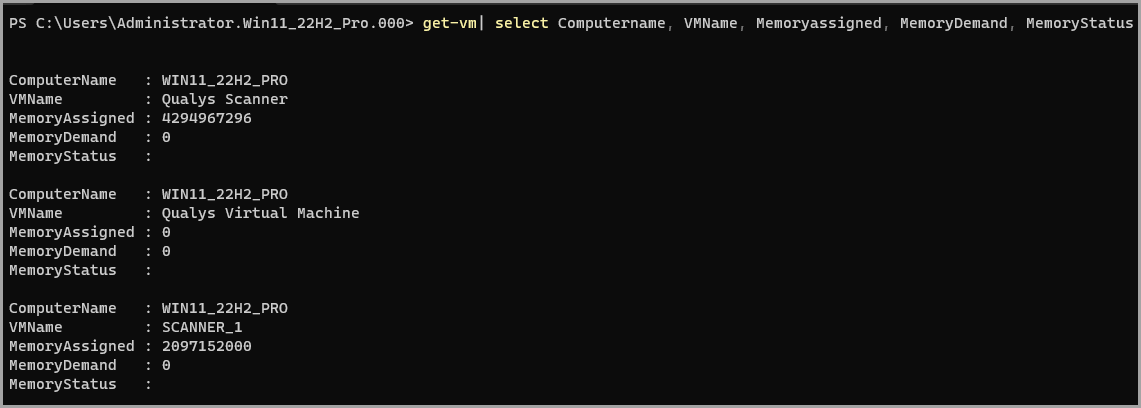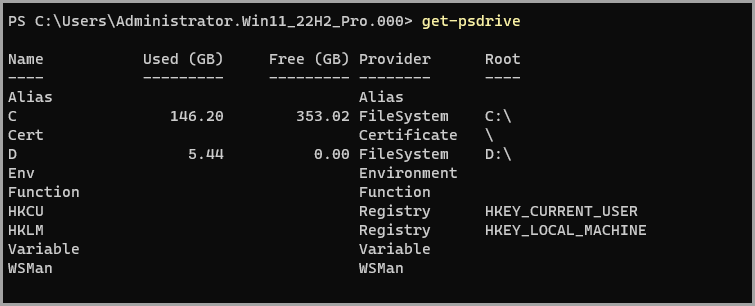Useful Commands: Hyper-V CPU, RAM and Storage Information in Windows PowerShell
Installing a Qualys Virtual Scanner Appliance in Hyper-V is a straightforward process, regardless of whether you are using Windows 11 or Windows Server 2019/2022. However, Windows 11 Pro is better suited for desktop use, while Windows Server may be the preferable option for a production environment.
If you choose Windows 11, you need to consider three important factors:
- CPU availability vs. assignment
- RAM availability vs. assignment
- Storage Capacity
The following commands are executed on Windows 11 22H2 by using PowerShell in Admin mode.
| Command | Description | Example |
|---|---|---|
| systeminfo | Displays basic configuration information about the OS name and version, BIOS, Processors, Memory, Network cards and Hyper-V requirements |  |
| get-computerinfo | Provides more detailed information about the System and OS properties t can be refined to select specific objects by using Objects: get-computerinfo | select-object *proc*. As an example, this server has 2 physical CPU cores and a total of 24 logical processors. |  |
| Get-VMHost | Provides information about the Memory and logical processors on the running Hyper-V. |  |
| Get-VMProcessor | Provides information on the number of logical processors assigned to Virtual Machines running on the Host. |  |
| Get-WmiObject Win32_Processor | Select LoadPercentage | Format-List | Displays CPUs load. |  |
| Get-VM |select Computername, VMName, MemoryAssigned, MemoryDemand, MemoryStatus | Provides information about Virtual Machines on one or more Hyper-V Hosts. For instance, to check the memory utilization of each VM, regardless of their status, you can run a command. |  |
| Get-PSDrive | Provides information on logical drives in Windows, including network shares. |  |
| Get-VMCheckpoint -VMName <virtual machine name> | Displays the list of available checkpoints for a specific VM. |  |
| Remove-VMCheckpoint -VMName <virtual machine name> | Deletes the checkpoints for Qualys Scanner VM. |  |